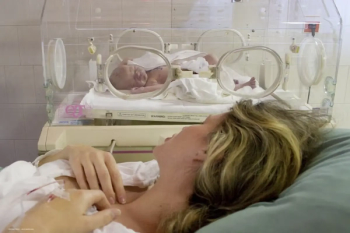
- Ophthalmology Times Europe September/October 2025
- Volume 21
- Issue 5
- Pages: 32 - 34
Do cosmetic contact lenses have a lower microbial keratitis rate than keratopigmentation?
Research finding challenge the widely-held notion that cosmetic contact lenses are the safest technique for changing eye colour
Eye colour change by keratopigmentation has become increasingly popular in the last 5 years.
However, most ophthalmologists believe that the safest technique for changing eye colour is wearing coloured contact lenses. Currently, four techniques are available: Cosmetic contact lenses (CCLs), cosmetic iris implants, laser iris depigmentation, and femtosecond laser-assisted annular keratopigmentation (FLAAK). Microbial keratitis (MK) is a well-known CL complication.1
Cosmetic implants have been reported to have serious complications.2 Laser iris depigmentation is likely a safer technique than cosmetic implants, but complications have been recently reported.3-6
An article describing the FLAAK technique was first published by Alió et al for pathological eyes in 20117 and by Ferrari for cosmetic purposes in 2015.8
This technique involves creating a corneal annular tunnel with a femtosecond laser, followed by corneal dissection with a special round spatula.9 The last step consists of introducing a micronized mineral pigment into the cornea (since December 2013: Biochromaeyes; Biotic Phocéa [third-generation pigment] and since October 2022: Neoris; Neoris [fourth-generation pigment]).
Demographic data concerning FLAAK showed a mean age of 37.6 ± 9.1 years (unpublished data); 64.3% of patients were female, and 35.7% were male.10 Demographic data concerning CCLs show a very high use of cosmetically tinted lenses among all CL wearers in Asia, ranging from 24% in Taiwan to 39% in Singapore, and a mean age of 26.8 ± 6.6 years. Of patients, 86.7% were women, while 13.3% were men.11 These patients reported safety data following the FLAAK procedure (Table).
Because most ophthalmologists believe that the safest technique for changing eye colour is wearing CCLs, we undertook this retrospective study to compare the incidence of MK between CCLs and FLAAK. To do this, we compared the percentage of MK in our FLAAK group of surgical patients with the percentage of MK given in the literature for patients wearing CCLs.
Patient selection
The first FLAAK surgery was performed in December 2013. At the end of 2023, 1953 patients underwent surgery at our centre. All patients were seen 1 day after surgery, and they were all evaluated again at 14 days after surgery (14 days representing the maximum incubation period for MK).12 None of the patients showed signs of MK during these two visits. Because the incisions were watertight from the second day onward, it is very unlikely that an MK would have appeared after 14 days. We can therefore assume that no patient among our surgical patients had MK, which means that there was a 0% rate of infectious keratitis.
Statistically, this group of 1,953 patients (some of whom underwent surgery 10 years ago and others a few months ago) can be compared with a group of approximately 2000 patients who all underwent surgery 5 years ago. The group of FLAAK patients was compared to a group (statistically extrapolated) of 2,000 patients who wore CCLs for 5 years. We have obtained consent from all patients to use their data for scientific research purposes.
Assessing patient outcomes
We did not receive any reports from local ophthalmologists following out-of-town patients or any reports of MK after the 2-week postoperative visit for our FLAAK patients. We can therefore consider that the number of MKs is equal to zero in the FLAAK group.
For prescription CLs, the MK risk varies from 2 to 20 infections per 10,000 CL users annually.13 An average of 10 cases of MKs per 10,000 CLs users each year were used for our study. It is also known that the risk of MK is much greater (16.5 times greater) with CCLs than with CLs.14 This would equate to 16 infections per 1,000 CCLs users per year or a 1.6% rate of MK. If a population of 2,000 CCLs carriers were to be followed for 5 years,
we could expect to calculate approximately 160 keratitis cases of infectious origin.
We compared two groups of approximately 2,000 patients each. The first group included 1,953 FLAAK patients; this group did not develop any cases of MK. The second (extrapolated) group included patients who would have worn CCLs for 5 years; this group would have presented (according to statistics) 160 patients with MKs over 5 years of CCLs use.
The chi-square test was used to compare MK rates between the CCLs group calculated over 5 years for 2,000 people and the FLAAK group of 1,953 people over five years. The chi-square test cannot be performed for groups with zeroes, so one case of MK was used in the FLAAK group for statistical analysis. The CCLs group had a significantly greater percentage of MK than the FLAAK group did (P < .00001).
To the best of our knowledge, only one complication has been described to date in FLAAK15; the patient, whose ocular history was positive for previous LASIK surgery, developed bilateral and progressive corneal ectasia with a 1-D increase in maximum keratometry after 6 months. The patient was successfully treated with standard epithelium-off corneal collagen cross-linking (CXL). The patient was stable throughout the 2 years of follow-up after CXL. It is accepted that FLAAK is a well-tolerated procedure.10,15
We believe that four factors could explain the absence of MK in the FLAAK group: 1) the corneal incisions were small (2.25 mm) and self-sealing; 2) the corneal re-epithelialisation at the incision sites was rapid; 3) the pigment was diluted in an alcohol-based solvent with antiseptic properties; and 4) antibiotic drops were administered for 10 days postoperatively.
Comparing results
The reasons for the difference in the MK rate between prescription CLs and CCLs are as follows16:
One-quarter of the CCLs were purchased illegally, with unlicensed stores being the most common place of purchase.17 Patients may not be provided with adequate assessments or appropriate counselling for CCLs.
Counterfeit CCLs have found their way into conventional supply routes. Microbial contamination of unused lenses and lens solutions within the original package has also been described.
Exposed pigments may induce toxic reactions in CCLs, resulting in systemic absorption of chemicals and greater bacterial adherence. High surface roughness, especially in CLs with pigment on their surface, may cause discomfort and mechanical trauma, reduced lens wettability, and increased adhesion and proliferation of protein and microorganism deposits.
CCLs wearers are likely to be contact lens naive and may incorrectly assume that cosmetic lenses are accessories that do not require proper lens evaluation, fitting and care.
Patients are less likely to adhere to recommended safe lens wear practices and scheduled follow-up consultations while using CCLs. According to a US study of adolescents using CCLs,18 more than half of them stored their CCLs in water and did not rinse their CCLs with contact lens solution after removal.
In contrast, there were no cases of MK in the first 2 weeks of the postoperative period after FLAAK, which is the time frame for MK development. One limitation of our study is that we did not obtain patient records to verify that MK did not occur after 2 weeks. We assumed that the patients’ local ophthalmologists would have informed us of such occurrences, as we regularly receive communications from local ophthalmologists who see the patients for follow-up because of their unfamiliarity with the procedure, as they request information about the procedure.
Another limitation of this study is that it is a retrospective analysis of FLAAK patients compared with a statistically extrapolated CCLs group. It was not possible to control or match for variables such as age and sex, which could have influenced the results. We believe that these differences are unlikely to account for the differences in the results because of the large sample size from which the MK cases were generated. We also were required to extrapolate the CCLs MK cases to match the 1,953 patients included in the FLAAK cohort. It is possible that this extrapolation either underestimated or overestimated the MK cases in the CCLs group. Some ophthalmologists tend to harbour two types of reservations about FLAAK (authors’ personal experience and interactions): First, it would be difficult, if not impossible, to examine an eye or perform other eye surgeries after FLAAK, such as cataract surgery. In an article,19 Ferrari demonstrated that ocular examination of the retinal periphery or the iridocorneal angle is made without difficulty. In addition, cataract surgery has already been performed without problems20 after FLAAK with a central 5-mm-diameter FLAAK “pupil.” Second, ophthalmologists believe FLAAK to be a high-risk procedure and, as a result, advise patients to pursue CCLs rather than discussing FLAAK with them. The very low incidence of MK with FLAAK will hopefully reassure ophthalmologists that FLAAK is at least as safe as CCLs.
References
Keay L, Edwards K, Naduvilath T, et al. Microbial keratitis predisposing factors and morbidity. Ophthalmology. 2006;113(1):109-116. doi:10.1016/j.ophtha.2005.08.013
George MK, Tsai JC, Loewen NA. Bilateral irreversible severe vision loss from cosmetic iris implants. Am J Ophthalmol. 2011;151(5):872-875.e1. doi:10.1016/j.ajo.2010.11.010
Ferrari F. À propos d’un cas de perforation irienne suite à une dépigmentation de l’iris au laser YAG à visée esthétique [Case report of an iris perforation after YAG laser iris depigmentation for aesthetic reasons]. J Fr Ophtalmol. 2021;44(5):e283-e285. doi:10.1016/j.jfo.2020.07.016
Ning B, Baboolal S, Gizzi C, Nolan W. A Case of Secondary Pigment Dispersion Following Laser to Cosmetically Lighten the Irises. J Glaucoma. 2022;31(2):133-135. doi:10.1097/IJG.0000000000001790
Swampillai AJ, Sherman T, Garg A, Tan IJ, Sheng Lim K. Secondary pigmentary glaucoma following cosmetic laser treatment to alter iris colour. Cont Lens Anterior Eye. 2023;46(2):101754. doi:10.1016/j.clae.2022.101754
Flores-Márquez A, Moreno-Gutiérrez JÁ, Chinchurreta-Capote A, García-Martín F, Rocha-de-Lossada C. Laser-induced maculopathy after iris depigmentation cosmetic treatment. Can J Ophthalmol. 2023;58(1):e29-e31. doi:10.1016/j.jcjo.2022.05.012
Alió JL, Rodriguez AE, Toffaha BT, Piñero DP, Moreno LJ. Femtosecond-assisted keratopigmentation for functional and cosmetic restoration in essential iris atrophy. J Cataract Refract Surg. 2011;37(10):1744-1747. doi:10.1016/j.jcrs.2011.08.003
Ferrari F, Morin L. Description d'une nouvelle méthode pour changer la couleur des yeux. À propos d'un cas de kératopigmentation annulaire esthétique (KAE) [Description of a new method of changing eye color: case report of aesthetic annular keratopigmentation (AAK)]. J Fr Ophtalmol. 2015;38(1):e3. doi:10.1016/j.jfo.2014.04.022
Neoris*, Neoris corneal dissector.
Alafaleq M, van Haselen R, Ferrari F. The safety and effectiveness of a novel annular keratopigmentation technique; a cross-sectional survey of patients. BMC Ophthalmol. 2023;23(1):292. Published 2023 Jun 27. doi:10.1186/s12886-023-02911-7
Rah MJ, Schafer J, Zhang L, Chan O, Roy L, Barr JT. A meta-analysis of studies on cosmetically tinted soft contact lenses. Clin Ophthalmol. 2013;7:2037-2042. doi:10.2147/OPTH.S51600
Ting DSJ, Chodosh J, Mehta JS. Achieving diagnostic excellence for infectious keratitis: A future roadmap. Front Microbiol. 2022;13:1020198. Published 2022 Oct 3. doi:10.3389/fmicb.2022.1020198
Fleiszig SMJ, Kroken AR, Nieto V, et al. Contact lens-related corneal infection: Intrinsic resistance and its compromise. Prog Retin Eye Res. 2020;76:100804. doi:10.1016/j.preteyeres.2019.100804
Bourcier T, Sauer A, the French Study Group of Contact Lenses-related Microbial Keratitis. Cosmetic contact lenses related microbial keratitis as a foreseeable disaster: A prospective study. Invest. Ophthalmol. Vis. Sci. 2010;51(13):2884.
D'Oria F, Alio JL, Rodriguez AE, Amesty MA, Abu-Mustafa SK. Cosmetic Keratopigmentation in Sighted Eyes: Medium- and Long-term Clinical Evaluation. Cornea. 2021;40(3):327-333. doi:10.1097/ICO.0000000000002417
Lim CHL, Stapleton F, Mehta JS. A review of cosmetic contact lens infections. Eye (Lond). 2019;33(1):78-86. doi:10.1038/s41433-018-0257-2
Gaiser H, Ho C, Janier N, Wee A, Johnson C, Watanabe R. Practitioner Perceptions of Patients Wearing Decorative Contact Lenses Purchased Through Unauthorized Sellers. Eye Contact Lens. 2017;43(2):135-139. doi:10.1097/ICL.0000000000000240
Berenson AB, Chang M, Hirth JM, Merkley KH. Use and misuse of cosmetic contact lenses among US adolescents in Southeast Texas. Adolesc Health Med Ther. 2019;10:1-6. Published 2019 Feb 7. doi:10.2147/AHMT.S196573
Alafaleq M, Garrido J, Ferrari F. Femtosecond assisted keratopigmentation (FAK) with a 5-millimeter diameter aperture does not affect ocular examination. Eur J Ophthalmol. 2023;33(5):1898-1902. doi:10.1177/11206721231158275
Ferrari, F; Neoris. Cataract after keratopigmentation Neoris surgery. 2020. Accessed September 2025.www.youtube.com/watch?v=QklbE4oXw6A
Francis Ferrari, MD | E: [email protected]
Ferrari is the co-inventor (with prof Jorge Alió) of FLAAK. In 2013, he performed the world's first eye colour change operation using keratopigmentation. He has served over 2,000 patients from five continents at New Eye Paris Keratopigmentation Center, where he practices.
Brian Boxer Wachler, MD | E: [email protected]
Boxer Wachler is a cornea specialist and founder of the Boxer Wachler Vision Institute in Beverly Hills, California.
Articles in this issue
about 1 month ago
Optogenetics for advanced retinal diseaseabout 1 month ago
A new direction for therapeutic keratopigmentationabout 1 month ago
Celebrating 25 years of EURETINA in Paris, Franceabout 1 month ago
Efficiency in glaucoma practices begins with an intentional design2 months ago
Insights into atropine usageNewsletter
Get the essential updates shaping the future of pharma manufacturing and compliance—subscribe today to Pharmaceutical Technology and never miss a breakthrough.













































